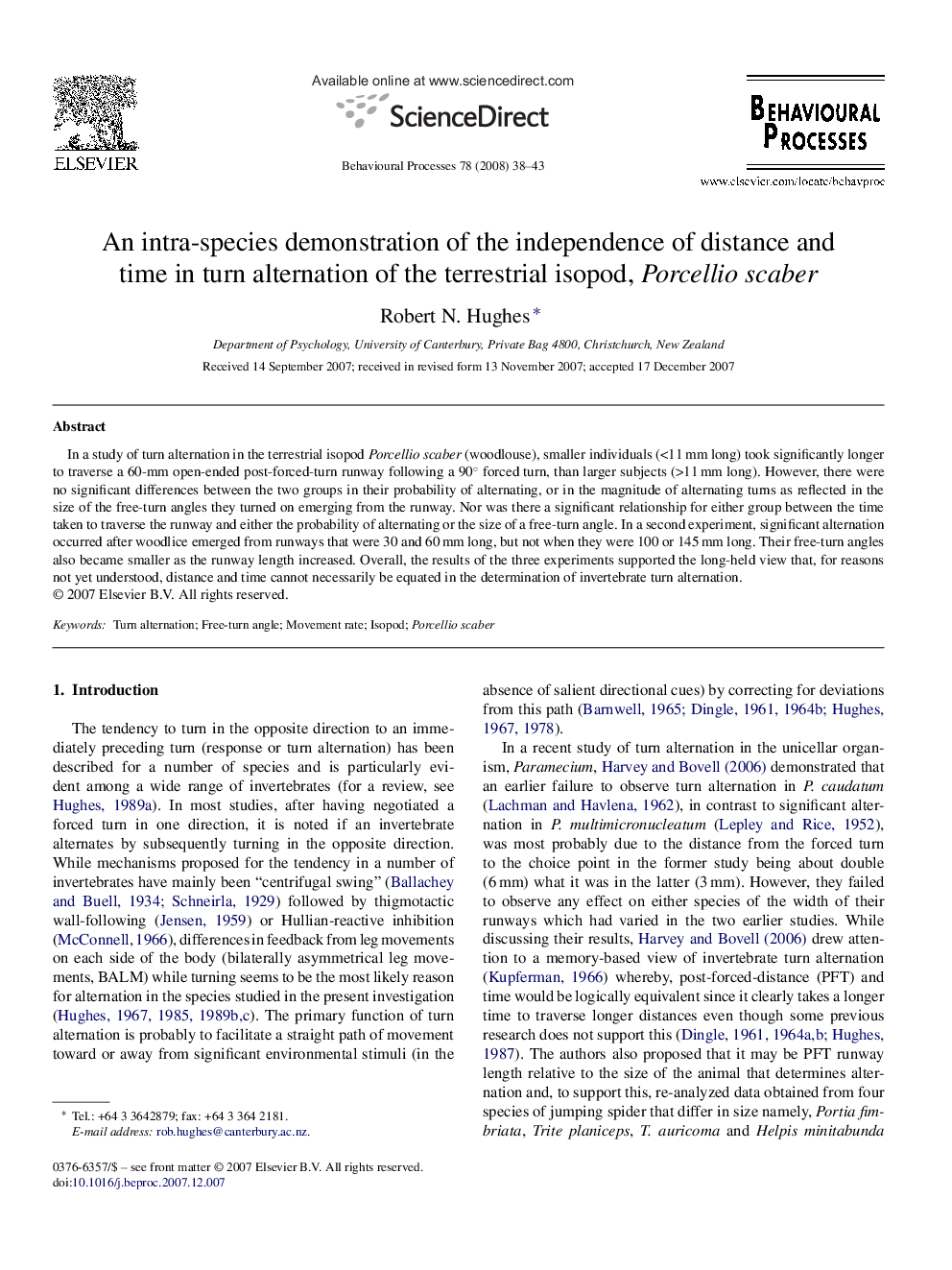| Article ID | Journal | Published Year | Pages | File Type |
|---|---|---|---|---|
| 2427591 | Behavioural Processes | 2008 | 6 Pages |
In a study of turn alternation in the terrestrial isopod Porcellio scaber (woodlouse), smaller individuals (<11 mm long) took significantly longer to traverse a 60-mm open-ended post-forced-turn runway following a 90° forced turn, than larger subjects (>11 mm long). However, there were no significant differences between the two groups in their probability of alternating, or in the magnitude of alternating turns as reflected in the size of the free-turn angles they turned on emerging from the runway. Nor was there a significant relationship for either group between the time taken to traverse the runway and either the probability of alternating or the size of a free-turn angle. In a second experiment, significant alternation occurred after woodlice emerged from runways that were 30 and 60 mm long, but not when they were 100 or 145 mm long. Their free-turn angles also became smaller as the runway length increased. Overall, the results of the three experiments supported the long-held view that, for reasons not yet understood, distance and time cannot necessarily be equated in the determination of invertebrate turn alternation.
